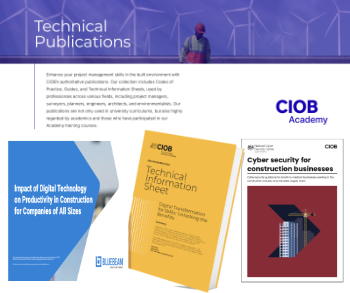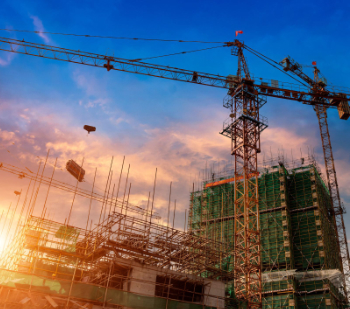Thames - a river highway
Contents |
[edit] Introduction
The River Thames is at the heart of London. While many walk past it or across it weekly, if not daily, the role it could play as a transportation method is often overlooked. It's time to change this.
Water transportation offers many benefits, not least because barges are estimated to produce between a fifth and one third of the greenhouse gas emissions per kilo carried, compared to the equivalent journey by lorry. As well as lowering the city's carbon footprint, harnessing the river will ease congestion, reduce the need for road maintenance, and improve cyclist and pedestrian safety.
When we consider how much traffic there is on London's roads, moving the heaviest vehicles onto the river seems obvious.
While there's no doubt that developing the Thames into a useful river highway has its difficulties, it's a vital step necessary to reduce emissions and traffic congestion.
[edit] Our 'green highway'
Cory Riverside Energy have been operating a fleet on the Thames to transport fuel in London for over 100 years, beginning with coal, before moving to oil, and now residual waste.
Our unique use of the river as a 'green highway' for waste means we can remove an average of 100,000 truck journeys and save around 13,500 tonnes of carbon a year.
[edit] How can London make better use of the Thames?
Despite the potential benefits, London clearly isn't using the river to its full potential. Given London has some of the most congested roads of any European city, with air pollution on some roads breaching annual limits in a matter of days, it's surprising that the opportunity to better leverage the river, and provide a quick and sustainable improvement in the quality of environment and life for Londoners, has largely been overlooked.
Moving freight traffic from the roads onto the river is a move that is entirely possible. The River Seine in Paris is a perfect example – for the past five years one of France's biggest convenience stores has been using the river to ship its stock throughout the city.
The same could be achieved in London with a little thought and application of effort.
Freight is the easiest modal shift to achieve. Freight is typically less time sensitive than passenger traffic, less sensitive to the transit time, and people are harder to persuade to adopt modal change – we only have to look at the difficulties there have been in moving people from cars to buses, and road to rail.
Nonetheless to transform the Thames into an efficient river highway for freight, there are some hurdles to overcome.
[edit] What kind of actions are needed?
London has only a very limited number of fully operational wharves in the central areas. Without this infrastructure for boats to dock, a modal shift of London's traffic cannot be considered.
That wharves that London still has need to remain protected from potential projects which change their use. All the wharves under threat from redevelopment should be limited to developments that only use the air rights, allowing the existing operational quayside and vehicle access to remain.
The new development proposed at Cringle Dock is a good example. Through working collaboratively with the Western Riverside Waste Authority (WRWA) and the Battersea Power Station developer, Cory have been able to help co-create a residential opportunity for the developer that also enables the renewal and continued use of one of inner London's wharves and important waste transfer stations.
Given that London is becoming increasingly overcrowded, enhancing our wharves in ways like this will contribute to the much-needed housing and office space while still invigorating the necessary infrastructure to serve the needs of London's river traffic.
[edit] How can London boost river use?
Developing a freight-friendly River Thames is important but challenging. To create the wharves, cranes, and river fleet to carry much of London's freight there is an urgent need for investment and collaboration between industry, regulators, local authorities and politicians.
London mayor Sadiq Khan recently highlighted the role the Thames can play in his London Plan, recognising that water transport is one of the most sustainable modes for freight. In addition, the PLA, the GLA, and TfL are already looking at the feasibility and coordination needed to develop this strategy. But it needs to turn into action and encourage investment and investors.
It's a big vision but one that offers a huge benefit to London's road users, residents, and businesses. And through collaboration it is certainly one we can and should achieve.
This article was originally published here by ICE on 12 Feb 2018. It was written by Nicholas Pollard, Cory Riverside Energy CEO.
--The Institution of Civil Engineers
[edit] Related articles on Designing Buildings Wiki
Featured articles and news
50th Golden anniversary ECA Edmundson apprentice award
Deadline for submissions Friday 30 May 2025.
The benefits of precast, off-site foundation systems
Top ten benefits of this notable innovation.
Encouraging individuals to take action saving water at home, work, and in their communities.
Takes a community to support mental health and wellbeing
The why of becoming a Mental Health Instructor explained.
Mental health awareness week 13-18 May
The theme is communities, they can provide a sense of belonging, safety, support in hard times, and a sense purpose.
Mental health support on the rise but workers still struggling
CIOB Understanding Mental Health in the Built Environment 2025 shows.
Design and construction material libraries
Material, sample, product or detail libraries a key component of any architectural design practice.
Construction Products Reform Green Paper and Consultation
Still time to respond as consultation closes on 21 May 2025.
Resilient façade systems for smog reduction in Shanghai
A technical approach using computer simulation and analysis of solar radiation, wind patterns, and ventilation.
Digital technology, transformation and cybersecurity
Supporting SMEs through Digitalisation in Construction.
Villa Wolf in Gubin, history and reconstruction. Book review.
Construction contract awards down one billion pounds
Decline over the past two months compared to the same period last year, follows the positive start to the year.
Editor's broadbrush view on forms of electrical heating in context.
The pace of heating change; BSRIA market intelligence
Electric Dreams, Boiler Realities.
New President of ECA announced
Ruth Devine MBE becomes the 112th President of the Electrical Contractors Association.
New CIAT Professional Standards Competency Framework
Supercedes the 2019 Professional Standards Framework from 1 May 2025.
Difficult Sites: Architecture Against the Odds
Free exhibition at the RIBA Architecture Gallery until 31 May.
PPN 021: Payment Spot Checks in Public Sub-Contracts
Published following consultation and influence from ECA.


























